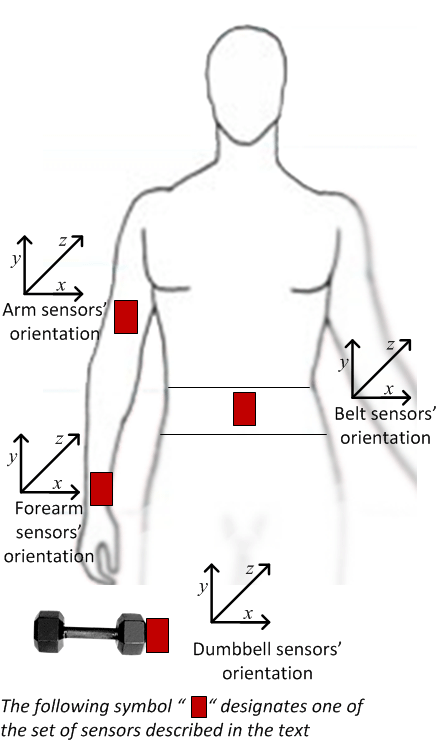Quality Activity Recognition
Motivation
Human Activity Recognition - HAR - has emerged as a key research area in the last years and is gaining increasing attention by the pervasive computing research community (see picture below, that illustrates the increasing number of publications in HAR with wearable accelerometers), especially for the development of context-aware systems. There are many potential applications for HAR, like: elderly monitoring, life log systems for monitoring energy expenditure and for supporting weight-loss programs, and digital assistants for weight lifting exercises.Weight Lifting Exercises Dataset
Six young health participants were asked to perform one set of 10 repetitions of the Unilateral Dumbbell Biceps Curl in five different fashions: exactly according to the specification (Class A), throwing the elbows to the front (Class B), lifting the dumbbell only halfway (Class C), lowering the dumbbell only halfway (Class D) and throwing the hips to the front (Class E).Class A corresponds to the specified execution of the exercise, while the other 4 classes correspond to common mistakes. Participants were supervised by an experienced weight lifter to make sure the execution complied to the manner they were supposed to simulate. The exercises were performed by six male participants aged between 20-28 years, with little weight lifting experience. Read more at: Weight Lifting Exerciese Dataset

Fig.1 - Sensors placement
Methodology
My approach can be described in the following steps.
- Data Preprocessing.
- Data Slicing.
- Machine Learning Model selection.
- Running the selected Model on the entire Dataset.
Conclusion
Three models have been developed using GBM, Decision Trees and Random Forests. The models were developed using Caret package in R. The detailed steps and programs can be found in the Github repository.To the Top